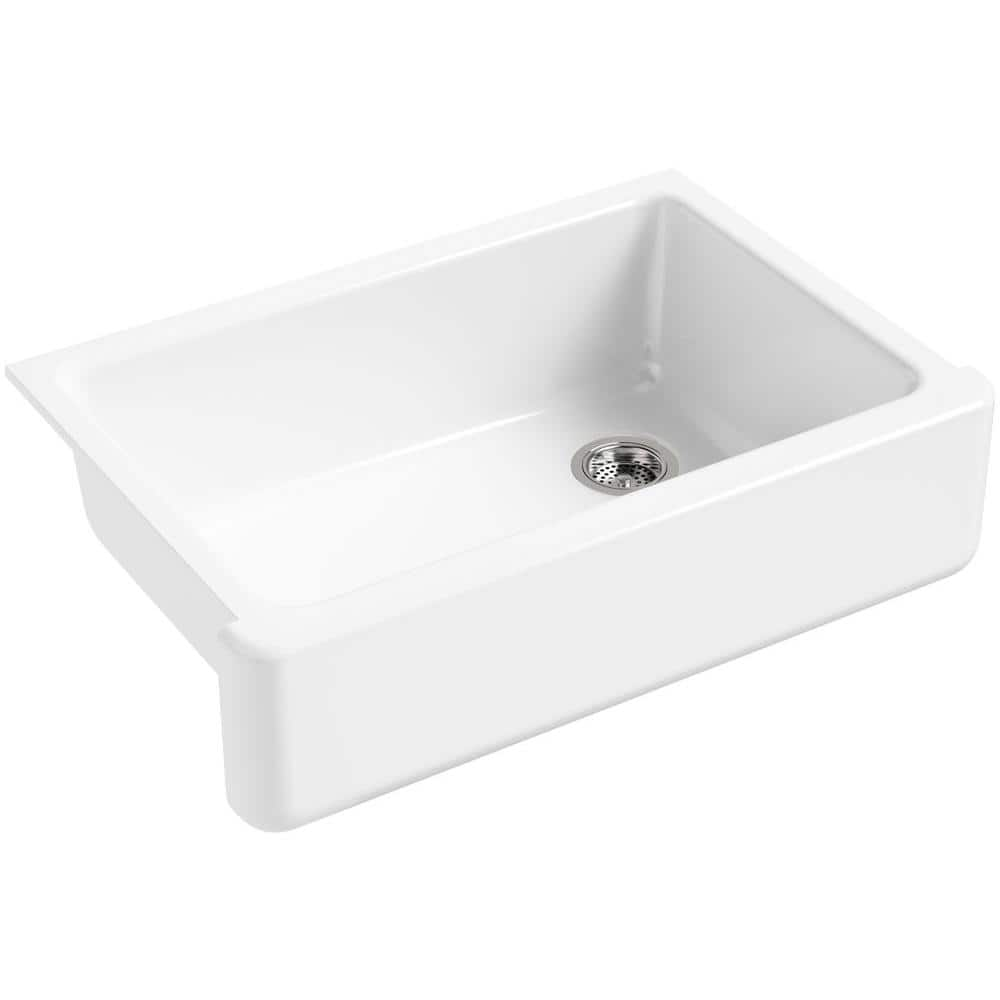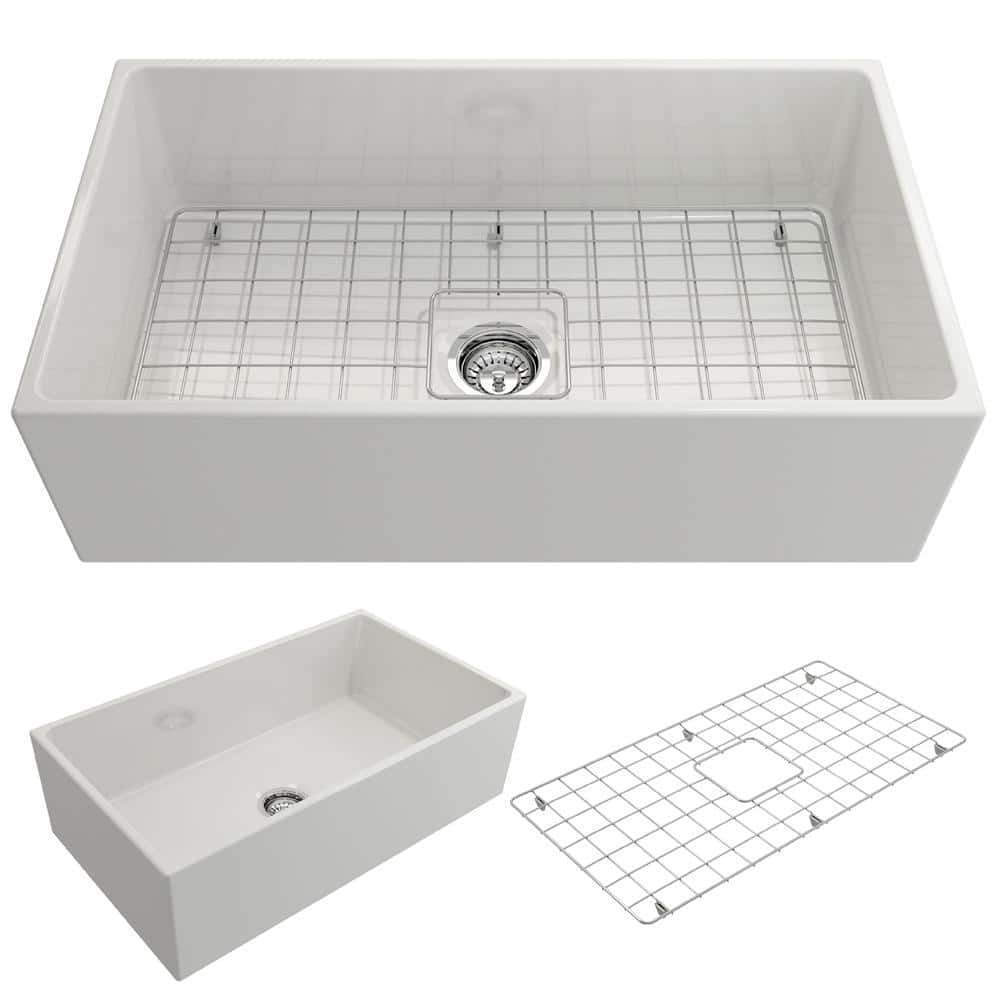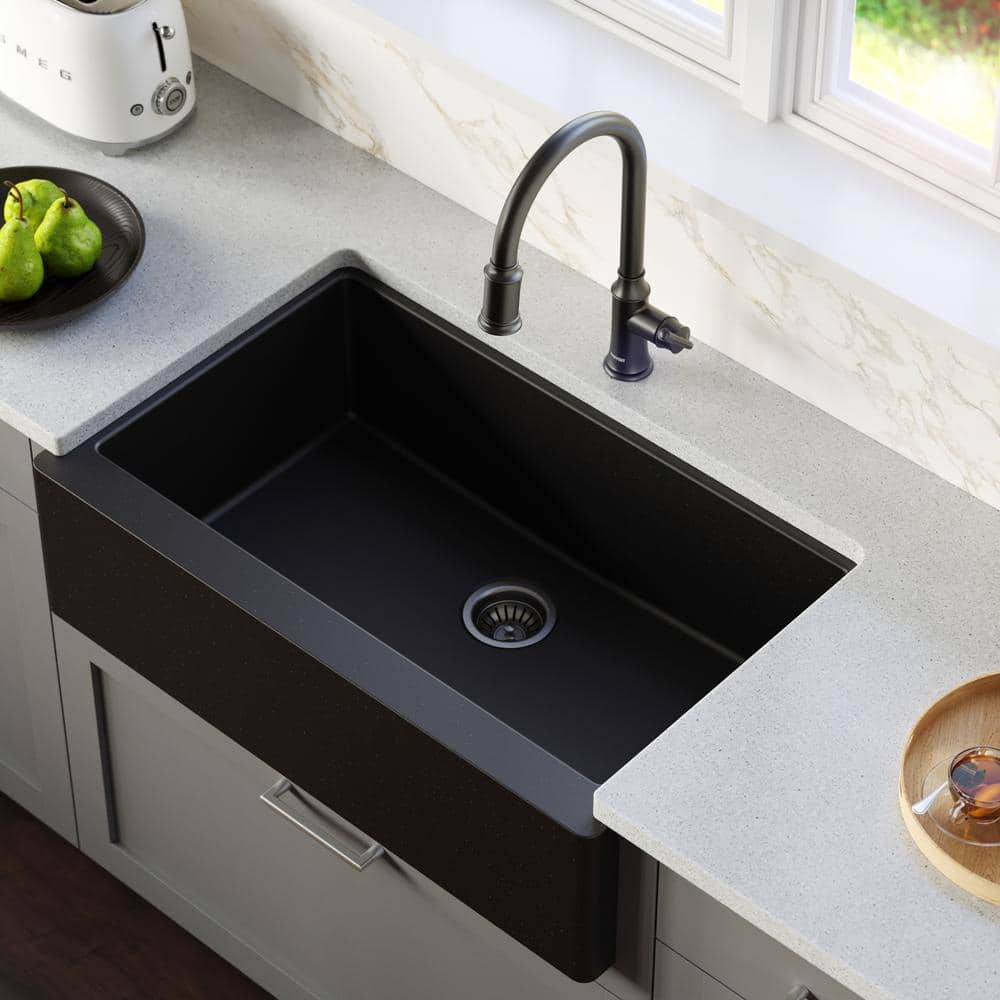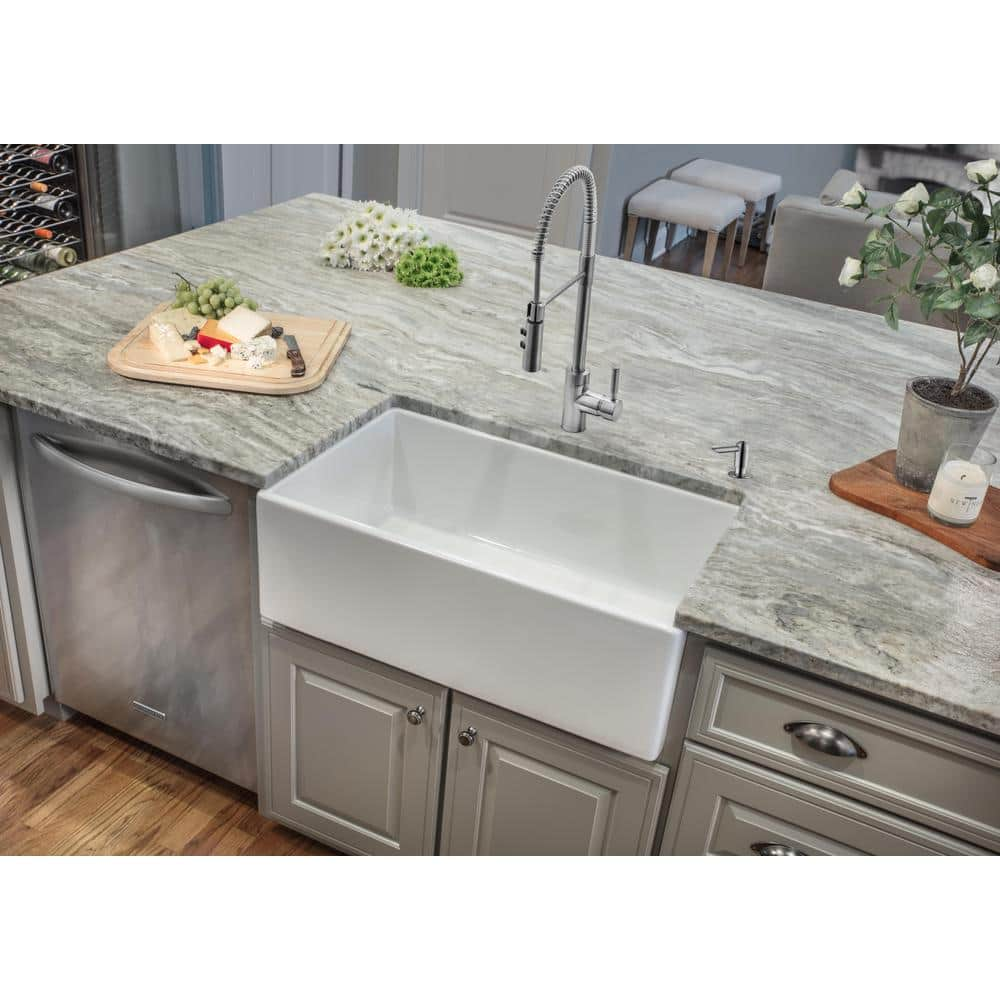KOHLER Whitehaven Farmhouse Self-Trimming Apron Front Cast Iron 33 in. Single Bowl Kitchen Sink in White
32-11/16 in. x 21-9/16 in. x 9-5/8 in. 33-inch minimum base cabinet width. Enameled cast iron material resists chips, scratches, and burns.
The Whitehaven apron-front kitchen sink features a streamlined and versatile farmhouse style to complement any decor. A large single basin accommodates large pots and pans, while the sloped bottom helps with draining and cleanup. Crafted from enameled Cast-Iron, this sink resists chipping, cracking, or burning for years of beauty and reliable performance. A standard apron front makes it easy to install on 33 in. apron-front cabinetry. The Self-Trimming design requires only a simple rough cut, overlapping the cabinet face for beautiful results.
- Single bowl
- 9-5/8 in. bowl depth
- Self-trimming apron overlaps the cabinet face for easy installation and beautiful results
- No faucet holes
- Basin slopes 2° toward drain to minimize water pooling
- Offset drain increases workspace in the sink and storage space underneath
- Includes cutout templates
- KOHLER enameled cast-iron
- Undermount apron-front installation
- Can be used with garbage disposal
Additional information
| Actual Left to Right Length (In.) | 32.6875 |
|---|---|
| Bowl Below Counter Depth (in.) | 9.625 |
| Bowl Front to Back Width (in.) | 18.0625 |
| Bowl Left to Right Length (in.) | 27.75 |
| Bowl Top to Bottom Depth (in.) | 9.625 |
| Cut-Out Below Counter Depth (in.) | 9.625 |
| Cut-Out Depth (in.) | 20.1875 |
| Cut-Out Width (in.) | 27.75 |
| Kitchen Sink Front to Back Width (In.) | 21.5625 |
| Panel Height (in.) | 9.625 |
| Panel Width (in.) | 27.75 |
| Certifications and Listings | CSA Certified |
| Manufacturer Warranty | Lifetime Limited Warranty |





by Jiffy
We love the curved edges on the interior and exterior of our sink! It makes it easy to clean and comfortable to use. My husband liked the instructions and had no issues installing it himself.
by Mary
So happy I splurged on this sink. It is worth every penny. Don’t hesitate, you will be happy with it.
by Andrea
Beautiful. It’s new so we will see how it holds up. Makes my remodeled kitchen shine. I also the rack to put inside to protect it.
by Jane
I am thrilled with my new Kohler farmhouse sink. It is so beautiful and makes dish washing enjoyable. Very high quality product!